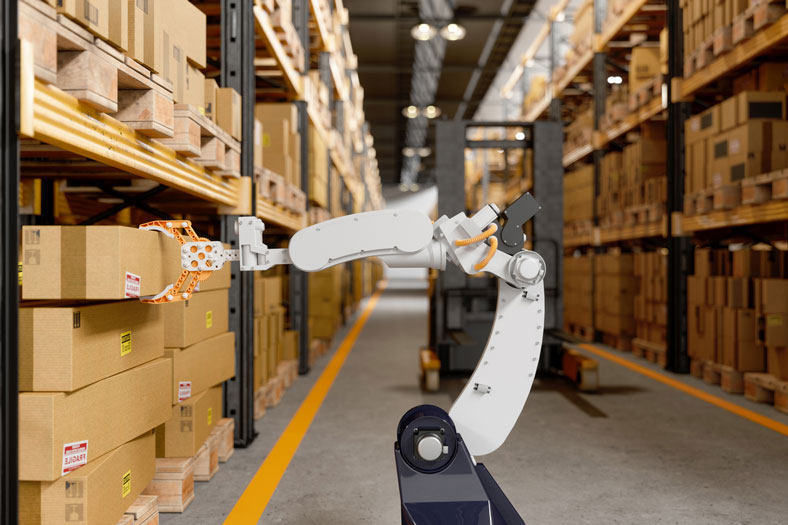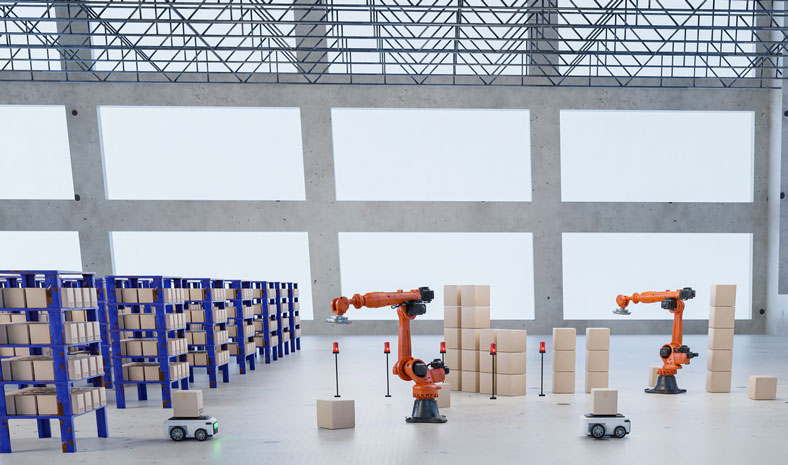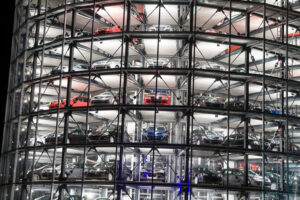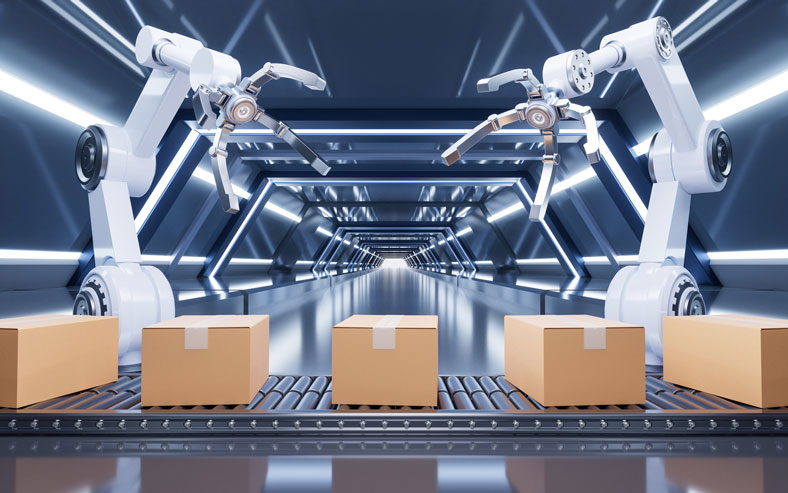Written by Scott Wilson

Technology is so woven into the fabric of experience in everyday life that sometimes it’s hard to see.
That’s just as true in supply chain management as elsewhere. Logistics teams don’t think twice about scanning QR codes with tablets, chatting via Slack messenger with colleagues eight time zones away, or pull up an inventory report on their laptop to check stock status.
Yet these are technologies that have fundamentally shifted the nature of the supply chain industry. They’ve expanded its reach around the world, made it faster, and made it more reliable.
Supply Chain and Logistics Technology Isn’t Just Found in Microchips
 A lot of what people talk about when they talk about supply chain technology is information technology—the computers and software that power communications and analysis. As supply chains become increasingly digitized, you’re going to keep hearing about that technology, for sure. And it’s going to create even bigger changes in SCM.
A lot of what people talk about when they talk about supply chain technology is information technology—the computers and software that power communications and analysis. As supply chains become increasingly digitized, you’re going to keep hearing about that technology, for sure. And it’s going to create even bigger changes in SCM.
Particularly in the supply chain world, tech advances can happen in areas that have little to do with computers and software. While digital supply chain management promises transformation and efficiency in the back office, there are also many tech developments in traditional logistics tasks.
Robotics on the Road and in the Warehouse
Robots have been a fixture in factories for decades, performing repetitive movements faster and more accurately than humans in tedious assembly jobs. But smarter robots, better sensors, and more information is leading to a new wave of autonomous devices that can handle everything from filling a box with product orders in a warehouse, to driving that box across the country to its destination. Warehouse automation is the next wave of storage innovation, while transportation may feel similar impacts from self-driving vehicles within a decade.
A Return to the Age of Sail
Technology is not always high technology. Technological breakthroughs combined with high fuel costs combined with new pressures to offer sustainable heavy cargo transport may be leading logistics into a new age of great sailing vessels. From parachute-like kite sails launched hundreds of feet into the air to high-tech composite airfoils that look like an airplane wing stood on end, massive cargo ships are taking advantage of nature’s motor to shift products between continents… with a high-tech helping hand.
Augmented Reality Everywhere
Augmented Reality, or AR, offers a unique way of integrating information technology and daily activity on the docks, in the cargo bays, and around warehouses in any logistics operation. Using smart glasses, computers can project an overlay of information directly into the line of sight of workers. Warehouse pickers may see a highlight around the bin containing the right product as they look at it; cargo loaders could see a detailed inventory overlaid on the side of a shipping container as they maneuver it through the freight yard.
AR may offer ways to deliver the benefits of RFID tracking and Big Data analysis right down to the level of the typical dock worker. And it can speed up and improve the accuracy of even the most basic of logistics tasks.
Information Technology Supply Chain Innovation Underlies Other Technological Leaps

Though supply chain information technology isn’t the only kind of technology at work in logistics today, the reality is that it enables and accelerates almost all the other kinds. Alone, either kind of advance would be groundbreaking. Together, they are earth shattering.
These supply chain technologies all come together with advanced information technology to become more than the sum of their parts. Sensors in sails sense wind shifts and adjust instantaneously. AR feeds come from virtual warehouse databases, matching real-world stocks to numbers in a distant cloud repository. Robots run on code, which can respond instantly to tweaks made by programmers half a world away.
Supply chain information technology offers managers a chance to absorb and analyze details instantly and adjust operations to fit new market or operating conditions.
Information technology carves out its own unique niche in supply chain management, as well. The same reach that ERP systems offer in other business departments apply in SCM, too. Analysis and planning positions have a faster, more in-depth perspective on what’s happening in the supply chain around the globe.
Supply Chain Management Technology Can Be the Key to Competitive Advantage
 Whether it’s revolutionary transportation technology or innovative collection and analysis of big data on seasonal fuel consumption patterns, the right technology with the right strategy can make all the difference honing a supply chain edge.
Whether it’s revolutionary transportation technology or innovative collection and analysis of big data on seasonal fuel consumption patterns, the right technology with the right strategy can make all the difference honing a supply chain edge.
Sometimes, this comes through big wins using flashy new technologies. Volkswagen’s twin Autostadt car towers rise above the Car Distribution Center in Wolfsburg, storing up to 400 vehicles vertically in a creative exercise in real-estate cost reduction. Robotic pallets shuffle new and recently serviced cars in a fully automated system. Around 500 cars per day are delivered to new owners there… each odometer still on zero, as the robots handle all the movement until delivery is made.
Other times, it’s a more subtle use of technological innovation that nonetheless delivers real-world results. Bosch, for example, makes use of IoT telemetry together with big data analytics to identify mean time between failure on machine tools in their diesel engine parts factory in Wuxi. Equipped with that information, factory managers can schedule maintenance downtime more effectively… machines prone to breakdown are maintained more frequently, while staff don’t need to spend as much time on more robust tools.
It’s a small thing that barely changes the rhythms of the factory floor. But it boosts output and reduces costs that can add up to tens of millions over the life of the factory.
Technology in the Supply Chain Isn’t Always a Clear Win

There are dangers lurking in technology in the supply chain as well. For all the amazing innovation and efficiency, not every technology trend is a winner in logistics. And the very fact of new technologies brings new pitfalls that many organizations are still uncovering.
New technology brings new complications for supply chain managers.
In the arena of Big Data, executives in some companies have been learning that more information can simply lead to paralysis… crunching all the numbers doesn’t always lead to strategic clarity. Instead, with new vision into trends and operations, sometimes leaders just find new layers of uncertainty.
This can also lead to micromanagement, where executives sitting in cozy office buildings attempt to orchestrate activities on loading docks hundreds of miles away with too much specificity. This leads to discounting expertise of the managers and workers on the ground, which is a problem for both morale and operations.
And new tech also doesn’t always come battle-tested. Devices fail; concepts don’t always work in the real world the way they did on the drawing board. These failures can be expensive, not just in terms of wasted technology investment, but in supply chain snarls that wouldn’t have happened if that technology weren’t in use.
Keeping an Eye on the Supply Chain Technologies of Tomorrow

Failures and all, technology in supply chain management isn’t going anywhere. It’s an industry that continues to seek advantages in innovation. That means supply chain managers need to build their own technology management and evaluation skills.
That makes degrees in supply chain management all but essential for a future in the industry. College coursework offered with such degrees includes plenty of specific coursework in areas like:
- ERP systems
- Logistics technology
- Quality Management Systems
- Supply chain reporting and analysis
Maybe even more importantly, supply chain management degrees come with the kind of university education that highlights critical thinking and problem solving skills. Even better than specific classes in supply chain technology, that mindset creates the adaptability necessary to learn new technologies in supply chain management as they are created.
There are even specialized degrees aimed directly at these areas like the Bachelor of Science in Supply Chain & Logistics Technology. These tend to concentrate on the engineering and operations side of the field, and go into more detail including:
- Legal and ethical subjects in technology and innovation
- Visual communication technologies
- Inventory and materials handling technology
Like other SCM degrees, they may offer other specialized tracks, allowing students to focus on areas like global logistics, systems management, or operations.
Supply chain technology companies keep the state of the art moving forward in this industry all the time. Supply chain managers who want to be successful in the field will have to keep their own knowledge just as current.







